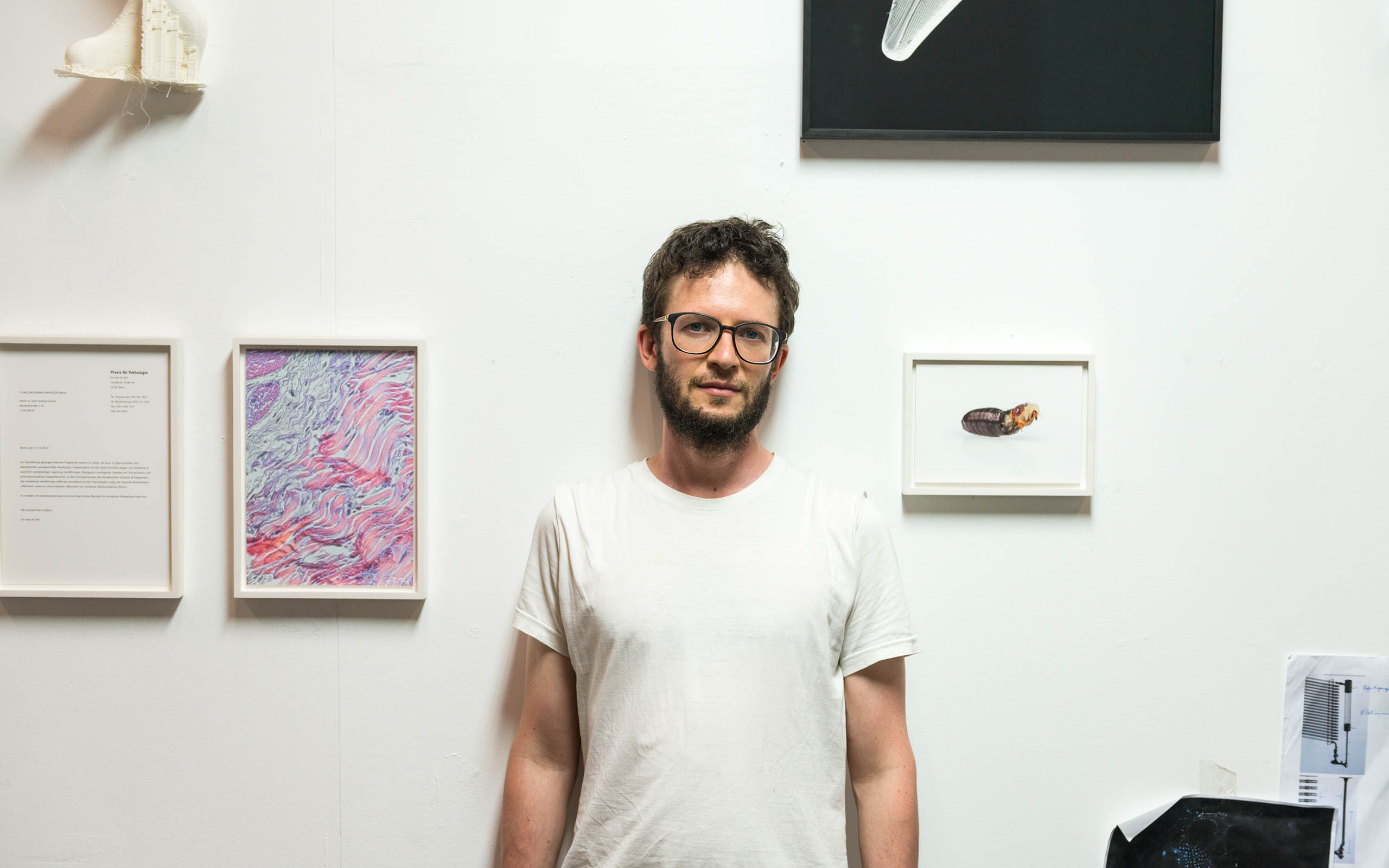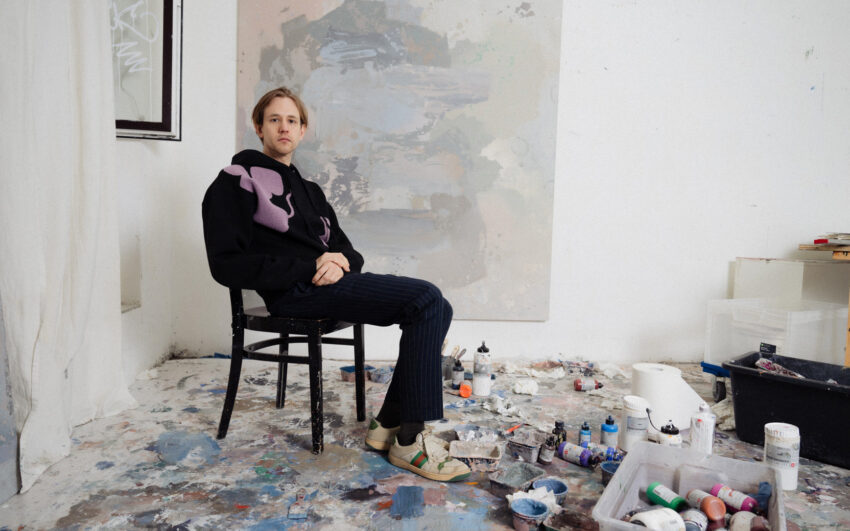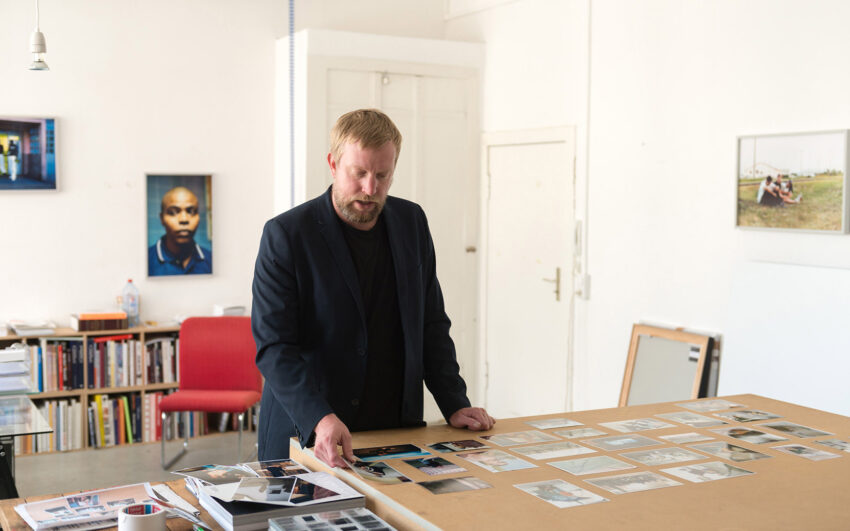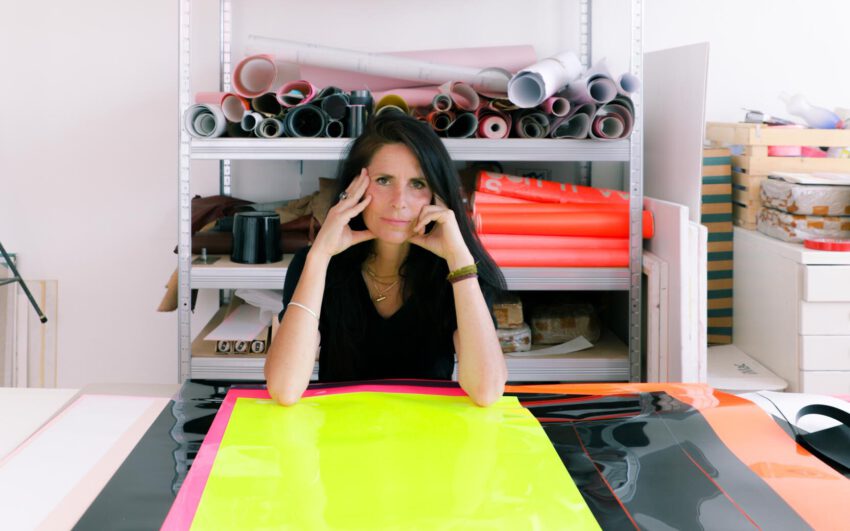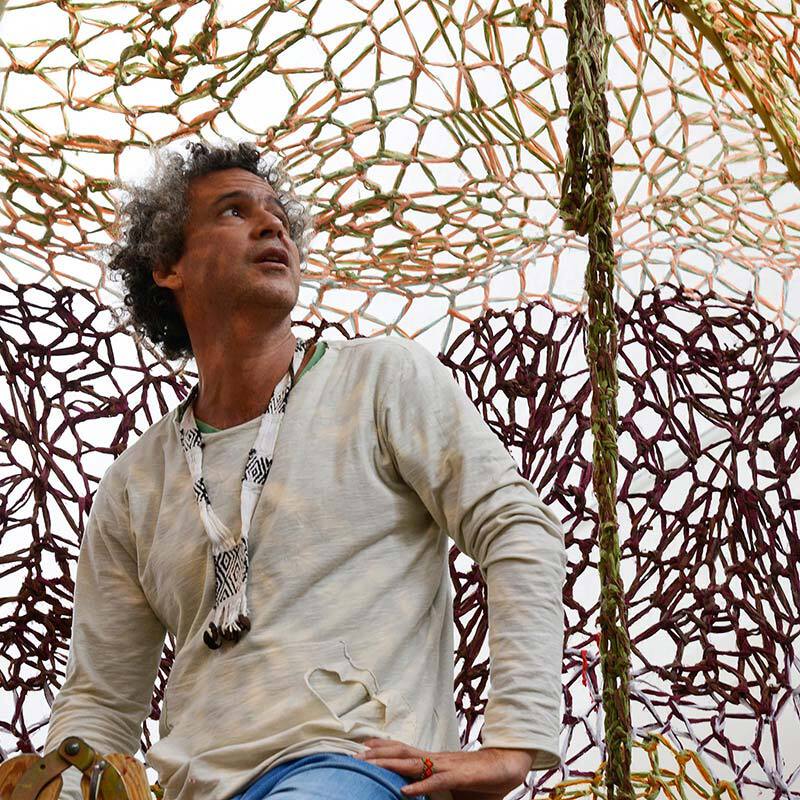A virtually boundless curiosity characterizes the artist Andreas Greiner, a former student of Olafur Eliasson. His art examines and seeks answers to questions concerning phenomena in the natural sciences, the humanities, medicine anatomy and music. We met Andreas Greiner in his studio, which he shares with some of his former co-students and with young stars of today’s art scene.
Andreas, you are the winner of the GASAG Prize 2016, which is awarded every two years for excellent artistic positions on the borderline of art, science, and technology. In your exhibition “Agency of the Exponent” at Berlinische Galerie you recreated a broiler chicken in the size of a Pterosaur. Can you tell us something about the genesis of the project Monument for the 308?
My earlier work From Strings to Dinosaurs with Tyler Friedman inspired me to explore the history of the extinction of species. The notion that species can become extinct is not that old and it is based on the excavation of dinosaur bones. During my research I discovered that in the early nineteenth century the French anatomist Georges Cuvier coined the term “espèce perdue” – lost species. As one of the earliest scientists he established the theory that an enormous catastrophe must have occurred and extinguished many species. With this theory he laid the basic foundation for today’s concept of evolution.
So this idea was developed for this work?
Yes. Chicken are actually close relatives of dinosaurs in the evolution of birds. That means in terms of evolution the chicken is a very ancient bird. It can’t really fly but flutters instead. This is what scientists also assume in regard to the Archeopteryx whose discovery contributed to the essential corroboration of Darwin’s theory of evolution. I planned Monument for the 308 deliberately as an exemplary dinosaur of our time for the entrance hall of the Berlinische Galerie.
You speak about the extinction of the species and of Darwin’s theory of evolution. What notions does the work epitomize?
For quite some time, I have been politically motivated in my behavior as a consumer, in particular in my choice of food. The treatment and mass production of fattening animals is a catastrophe. For quite some time, I’ve rejected meat from commercial animal fattening plants. Furthermore, I’ve always been fascinated by anatomy, this being the reason why I developed the work from an anatomical perspective.
How can criticism of our consumer behavior be read from the anatomy of a fattened rooster?
In order to carry as much meat as possible fattened chicken must develop very strong legs. Chicken grow quickly, but because of their short life span their bones do not reach the maturity of a fully-grown bone. Monument for the 308 visualizes the changes in the skeletal structure of a chicken by presenting it as if under a magnifying glass displaying the immature growth form of the young bones and their absurd proportions. Therefore it is a speculative archeology that reveals a lot about us, about our culture, and particularly about our relationship to nature.
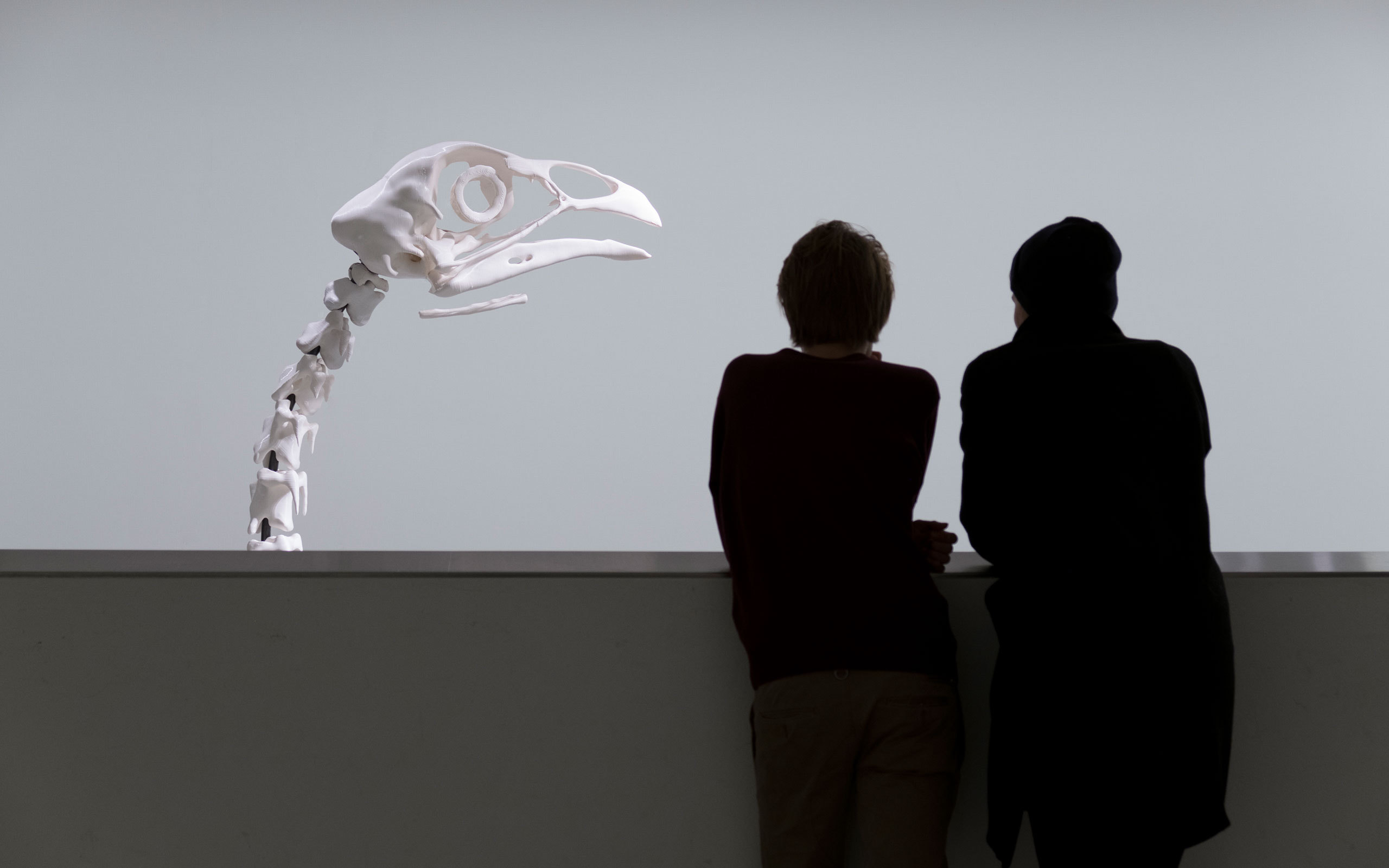
Monument for the 308, Berlinische Galerie, 2016, Photo: (c) Theo Bitzer
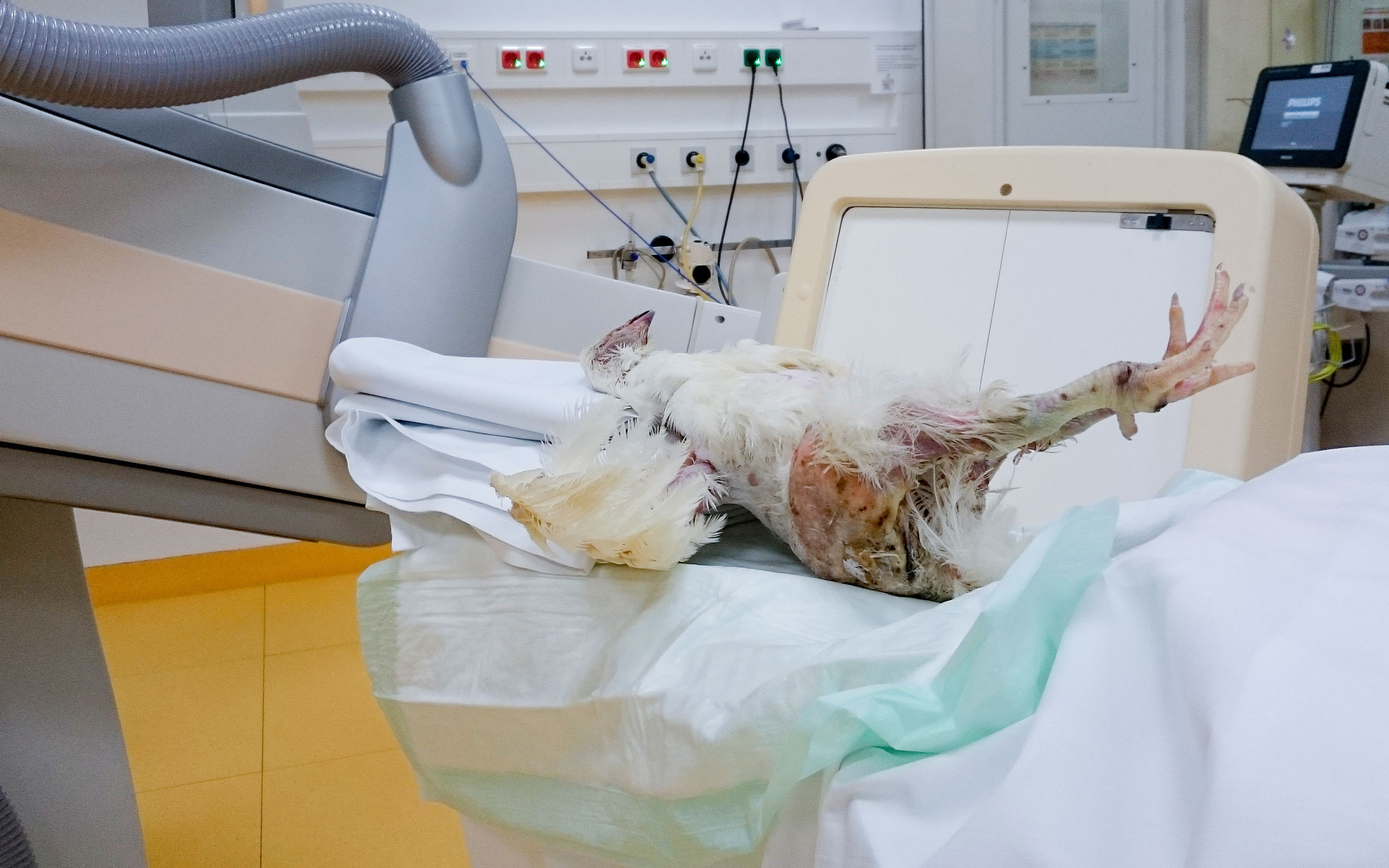
The original chicken is x-rayed for the 3D rendering of its skeleton
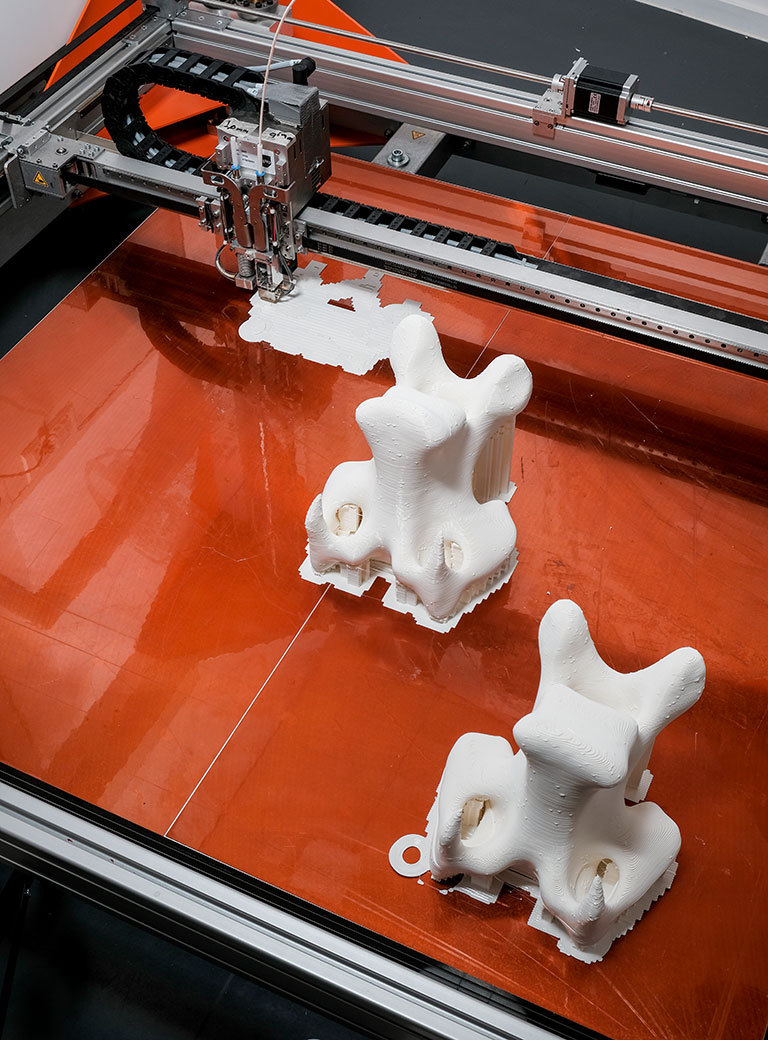
3D printing the sculpture at the ViNN:Lab of TH Wildau, Photo: (c) Theo Bitzer
Was there a “model” for this work?
There was one chicken which was unable to act as a “standing model”, because it had died in the poultry farm, the result of a broken foot joint. Presumably, its bones were unable to carry its rapidly increasing bodyweight. I intended to create an authentic survey, a kind of “diagnosis” of farm animals and of livestock farming in 2016. I had to drive around Brandenburg for a long time before finding someone willing to provide me with a fattened chicken that had died in an industrial poultry plant. According to our current hygiene regulations this is illegal and I was very fortunate to be able to reach my goal after having received numerous refusals. Then I drove back to my studio with the dead chicken, washed it, placed it in the required position by means of a wire frame construction and transported it in a deep-frozen state to the Charité. The chicken was then subject to a precision CT scan to produce multiple cross-sectional x-ray scans which ultimately enabled the creation of the 3D model.
What role remains for you as a sculptor in the face of these new technologies?
In the case of Monument for the 308 I was less interested in my role as a sculptor but rather in the transformation of an archeological find, in this case, the dead chicken, into a digital archive and the translation of these data into an enlarged three-dimensional sculpture. The enlargement in the scale 20:1 is not only a reference to art historical methods of enlarging, ennobling, by which a quite physically small living entity is transformed into monumental form revealing both the creative technological invention of man and the nature of the chicken. This would not have been possible without the collaboration of an extensive interdisciplinary team and with modern technology and it began with the radiologists at the Charité and the Medical Model-Building Manufacture for data processing. And it continued with Markus Lahr and his team at the ViNN:Labb of the Technical University Wildau, whom I have to thank hugely. There and in the Berlin Start Up Big Rep the monument was printed using two 3D-printers 24 hours/day over a period of two months. Without my studio assistants who sorted the bones and constructed the supporting steel structure with me I would have been in a fix.
It must be hard to sell a sculpture of this size. What would be the ideal home for Monument for the 308?
A natural history museum.
Through enlargement in your work, even very small living entities meet us at more or less eye level. What do you wish to communicate with the stylistic element of enlargement that has become characteristic of your work?
Above all I want to direct viewers’ attention to these living beings and make them visible to them.
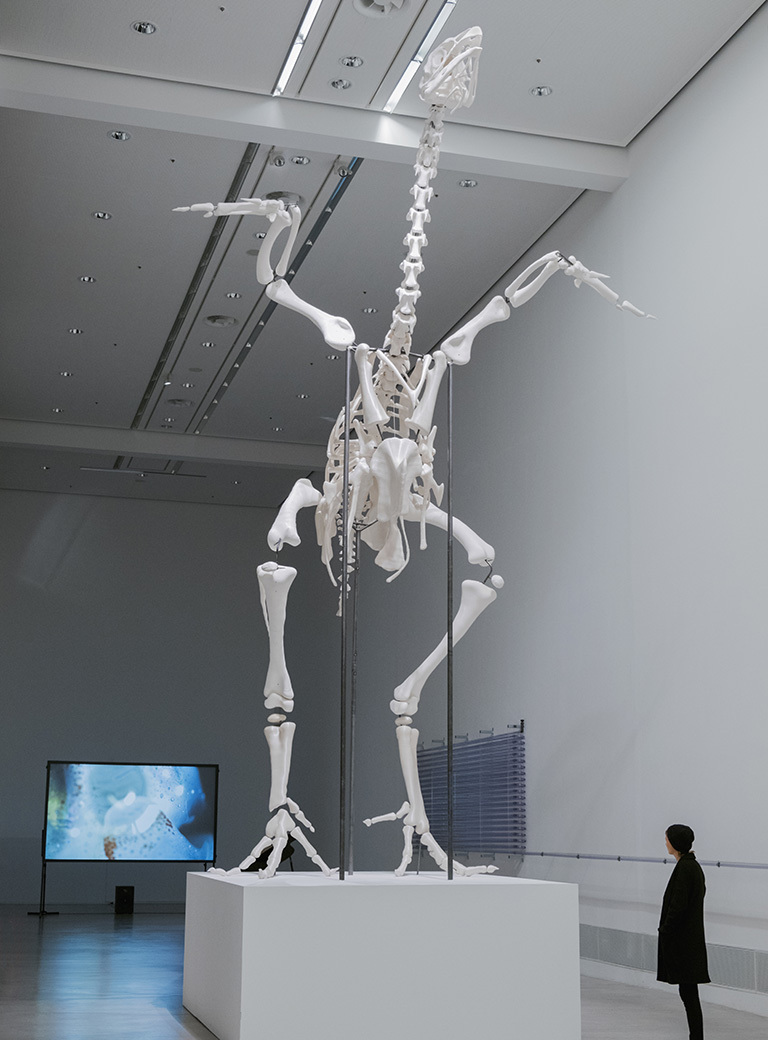
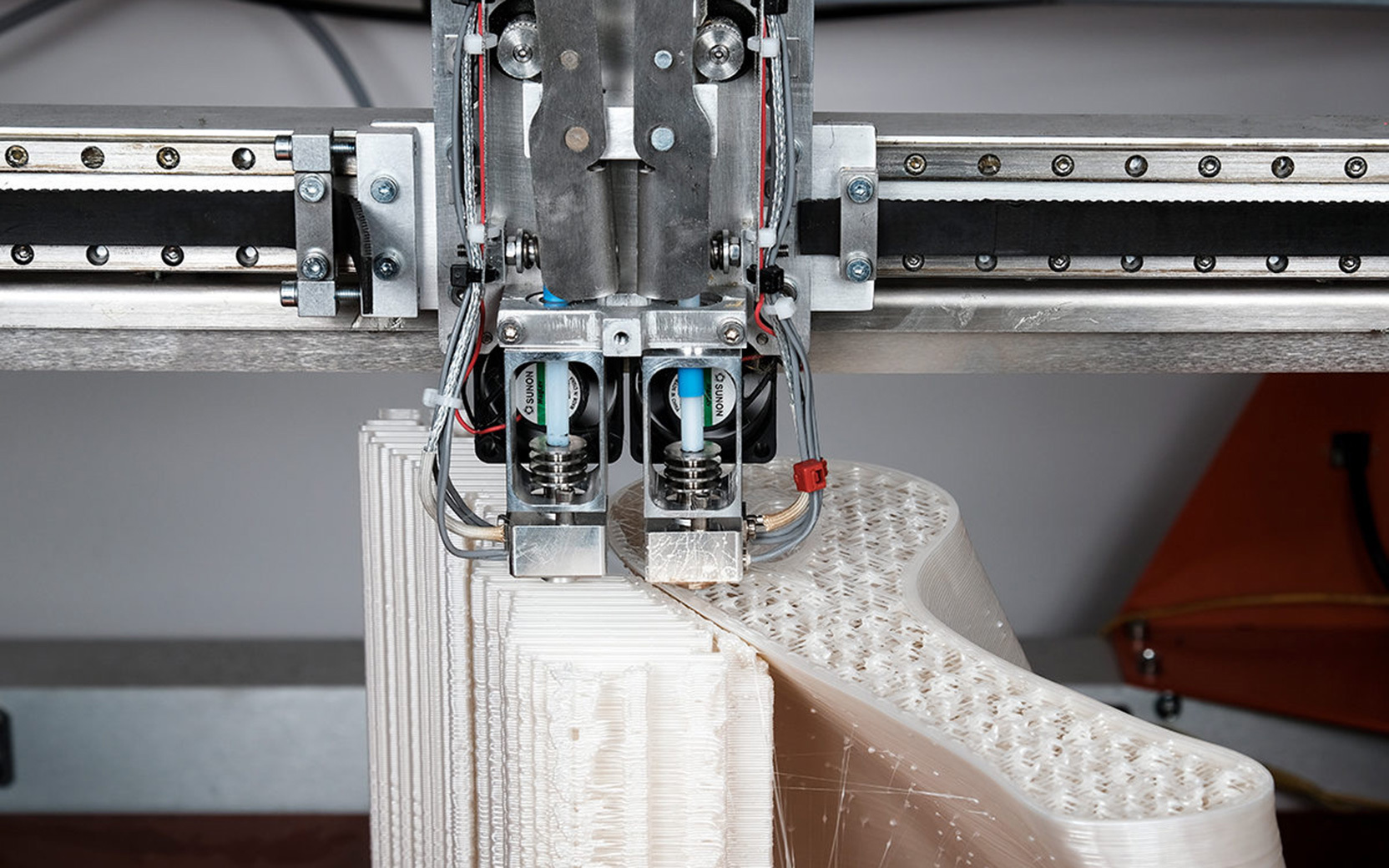
3D printing the sculpture at the ViNN:Lab of TH Wildau, Photo: (c) by Theo Bitzer
In May 2017, you showed your oversized sculpture in the context of nutrition issues at an industrial food fair in Milan, to which keynote speakers like Barack Obama were invited. Does your work change if it is not presented in a “white cube” as in the Berlinische Galerie?
The work itself does not change, but the context does. It was interesting, because it has become clear to me, how much the white cube setting charges the works with an aura attracting the attention of the viewers and sensitizing them. At fairs like the one in Milan the attention is directed differently – the visitors don’t expect and don’t search for a second level of meaning beyond what they see. They are focused on usable products.
Has the presentation of your work on the food fair been worthwhile?
The fair was a good opportunity to become involved in on-site conversations where exciting concepts of various start-ups were presented: algae as a source of nutrition, vertical gardening, urban farming, food pairing for new recipes on the basis of AI (artificial intelligence), digital beehives, etc. Since then I feel almost inclined to begin my own start-up...
What can art actually achieve in today’s society? What’s its task?
Art should provide an incentive to reflect on the present and a free social space for open creativity – a space that inspires and allows for new thinking. Art inspires people to become more conscious about themselves and about their activities, acts and production in delimitation to the “rest”. With art man has carried out a hypothetical separation between human “production” and all other results of metabolic and thermodynamic processes on this planet.
Where can your art be located in our time?
We live in a time in which human beings have become the decisive creative power on this planet. Our footprint is everywhere. The classic dichotomy between nature and art is dissolving – artifacts are replaced by biofacts and man is now creating what was classically understood as nature. My work seeks to question these boundaries, or non-boundaries, between nature and man and also the ethical dimensions of our creative impact.
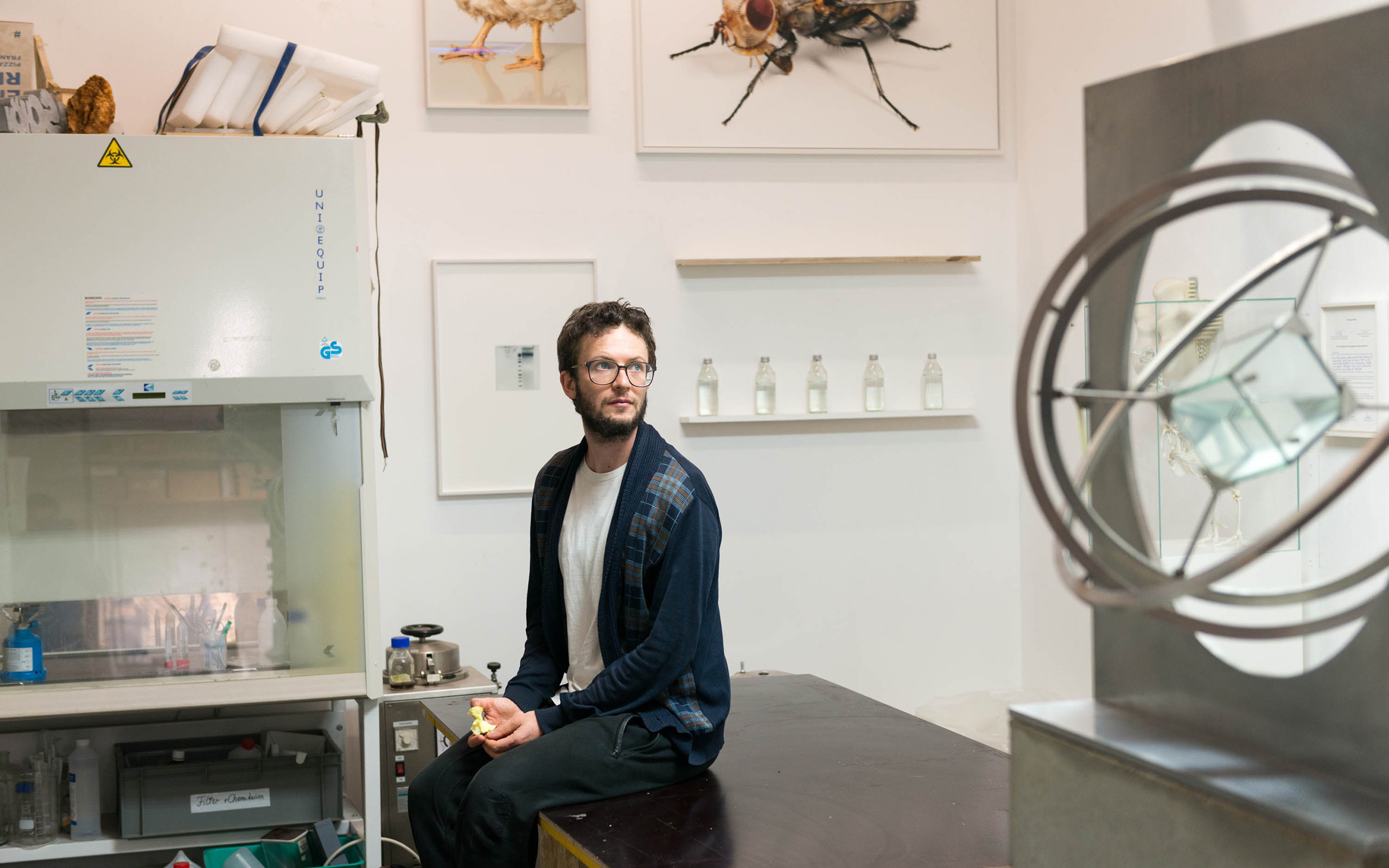
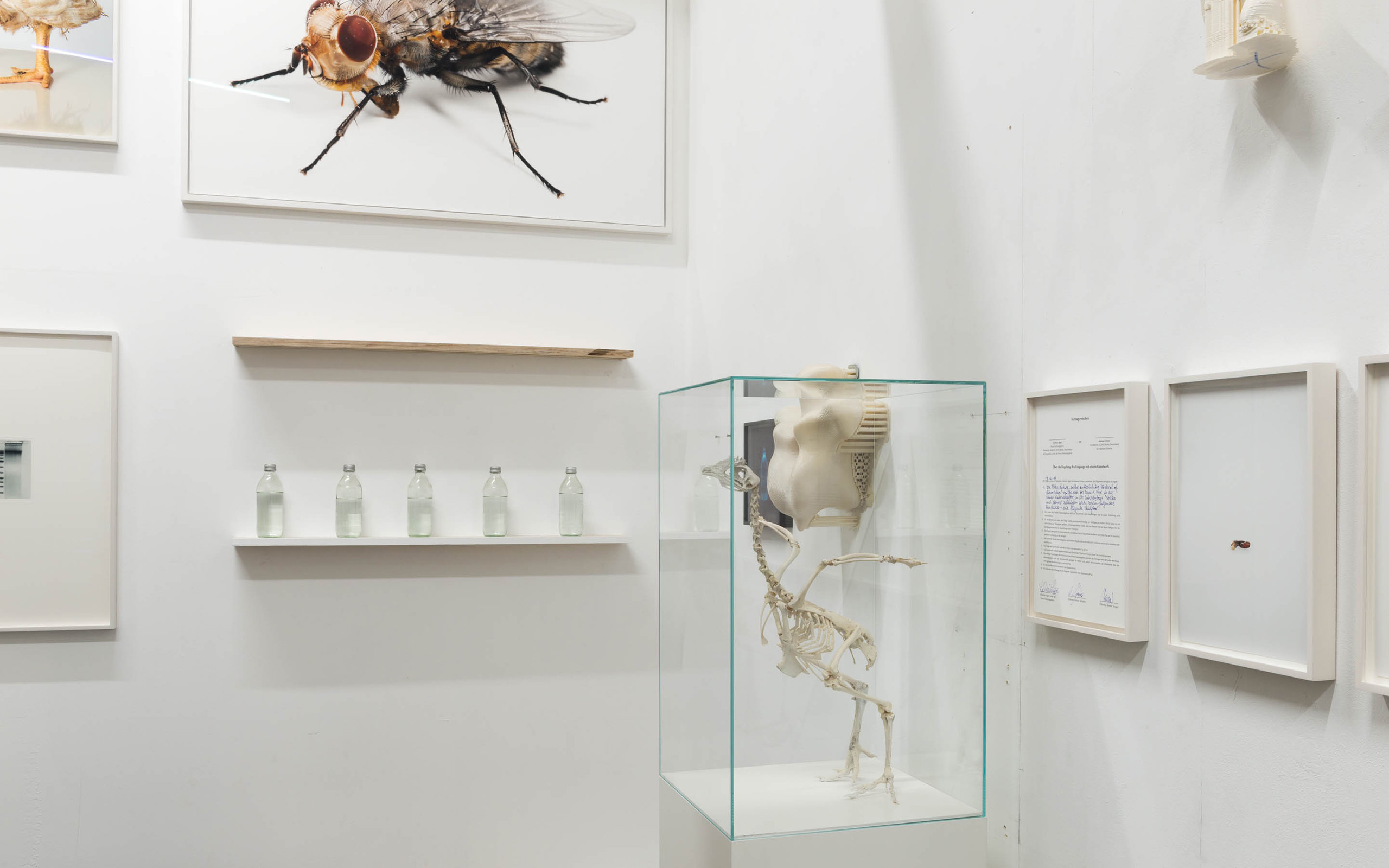
Can you give us a short outline of your very versatile career?
In 2000, I studied sculpture in Florence and San Francisco. Later on, from 2003 to 2006, I studied medicine in Budapest and Dresden, and in 2007/08 art, at first with Rebecca Horn at the UdK (University of the Arts in Berlin) and afterwards, from 2009 to 2013, in Ólafur Elíasson’s “Institute for Spatial Experiments”.
How did it happen that you oriented yourself in so many directions?
My different studies are the result of a consequential pursuit of various questions which still occupy me.
Would you say that through the natural science contents of your studies like anatomy and biology you have a different view of living beings?
No. I belong to the generation of the first TV and computer kids. As a kid I would rather play on the computer than in the forest at my grandma’s. As with so many farmers at the time, she too, had to give up her farm. Farm animals have disappeared from the public consciousness – from the small farms into the processing plants of large producers. No, my view is rather characterized by my generation’s estrangement from nature. It’s a strange mixture of empathy and enchantment that there is life outside the human realm.
In 2015, you and a colleague were awarded the Conlon Music Prize. How important are such awards outside the visual arts for you?
Yes, Tyler Friedman is an incredibly talented composer and I had the great fortune to collaborate with him a couple of times. In the case of our awarded piece I mainly worked conceptually and creatively, preparing for example the piano with bright algae and taking care of the complete darkness in the space. I hardly contributed anything to the musical elaboration of the details. However, we developed the conceptual structure of the composition together: The music becomes exponentially more complex and denser and correlates with the curve of the exponential growth of a population of algae.
Is such an award typical for our time?
At a time when disciplines overlap more often and work together, it is no longer surprising that one would receive an award for something which one would not have been able to create alone.
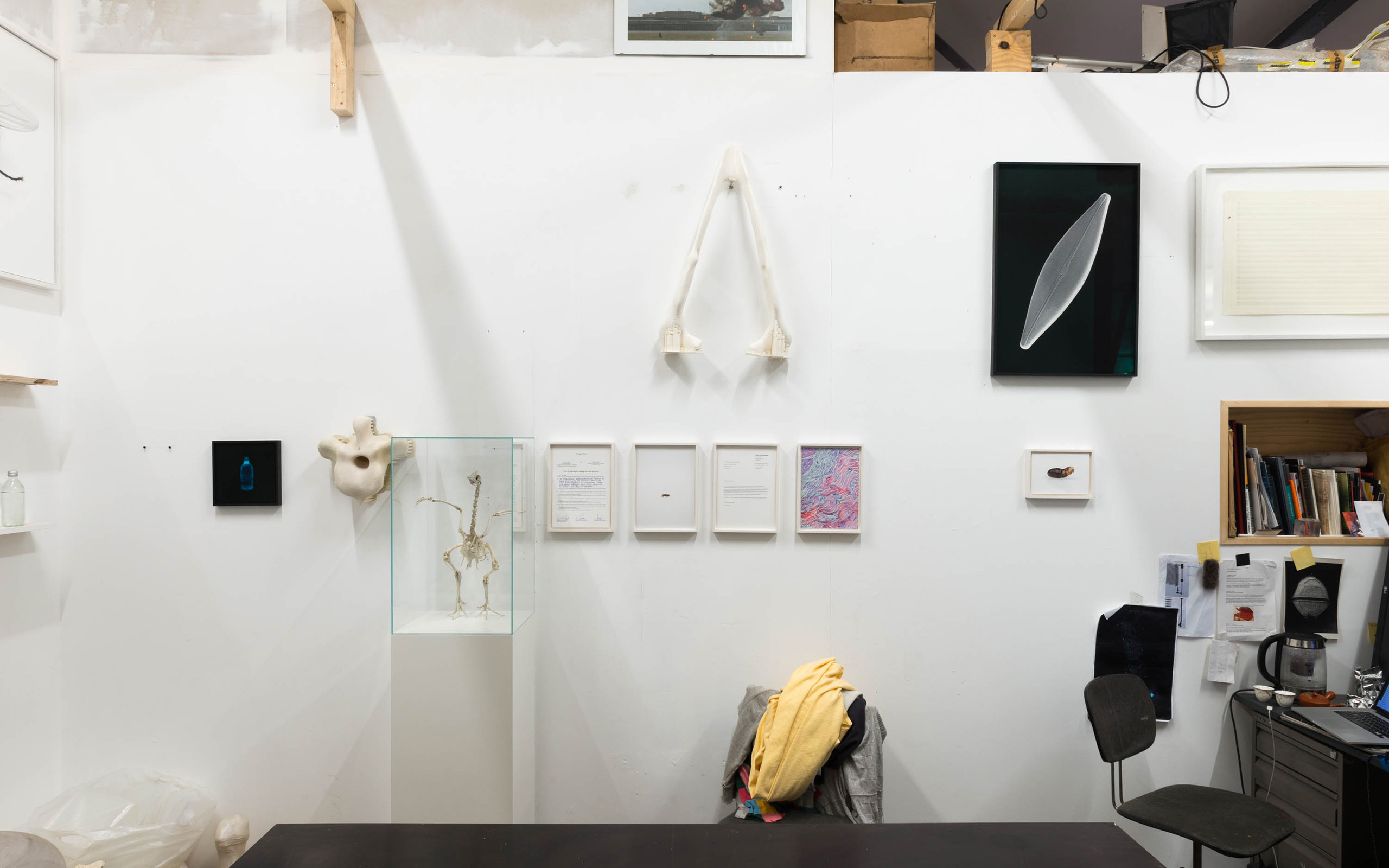
You recently received a travel grant from the Berlin Senate which enabled you to visit the United States. Europe’s general view of the US is currently one of alarm and censure… How did you perceive the country?
Overall I had the impression that the cost of living is very high in the US and that infrastructure such as public transportation is rather undeveloped in some places. The country is heterogeneous on all levels, and as a result, is very varied and exciting. Most people I met were very critical of the present government. At Harvard and at MIT (Massachusetts Institute of Technology) I met some interesting scientists and artists, which was very inspiring to me in regard to future projects. At both universities there are researchers from all over the world which creates a very international atmosphere.
What collaborations have developed from this?
For example I started a work with Jan Philipp Balthasar Müller, a Berlin friend who has completed his doctorate in physics from Harvard, which makes pictures from the exhibition space in real-time with the help of artificial intelligence. The work was shown for the first time in Tokyo shortly after my sojourn in the US. In Los Angeles I’ve curated the second edition of 24h Skulptur, an exhibition which focuses on digital technology and virtual reality in the area of sculpture with Ursula Ströbele (University of the Arts in Berlin).
You work with five former co-students of the graduate class of Ólafur Elíasson’s “Institute for Spatial Experiments” in a hall of the malt factory in Berlin-Tempelhof. How does this studio community function?
In the studio a good atmosphere prevails. There is no competition. I would rather call it a reciprocal stimulus, when you see what the others – they are Julius von Bismarck, Julian Charrière, Markus Hoffmann, Felix Kiessling, and Raul Walch – are doing.
Does collaboration develop among you and your colleagues through the environment of the open studio which as we have mentioned is very important for your work?
Yes of course. You can see it in our portfolios. We are often being mixed up. The oldest collaboration from our studio is Numen – a collective work by Julius, Julian, Felix, Markus, and myself, which has existed since 2009, our fourth study semester at the UdK. In the third exhibition of the series Made in Germany at Sprengel Museum Hannover we are presently showing our new work The Numen Meatus, directly beside Julius‘s installation Freedom Table & Democracy Chair.
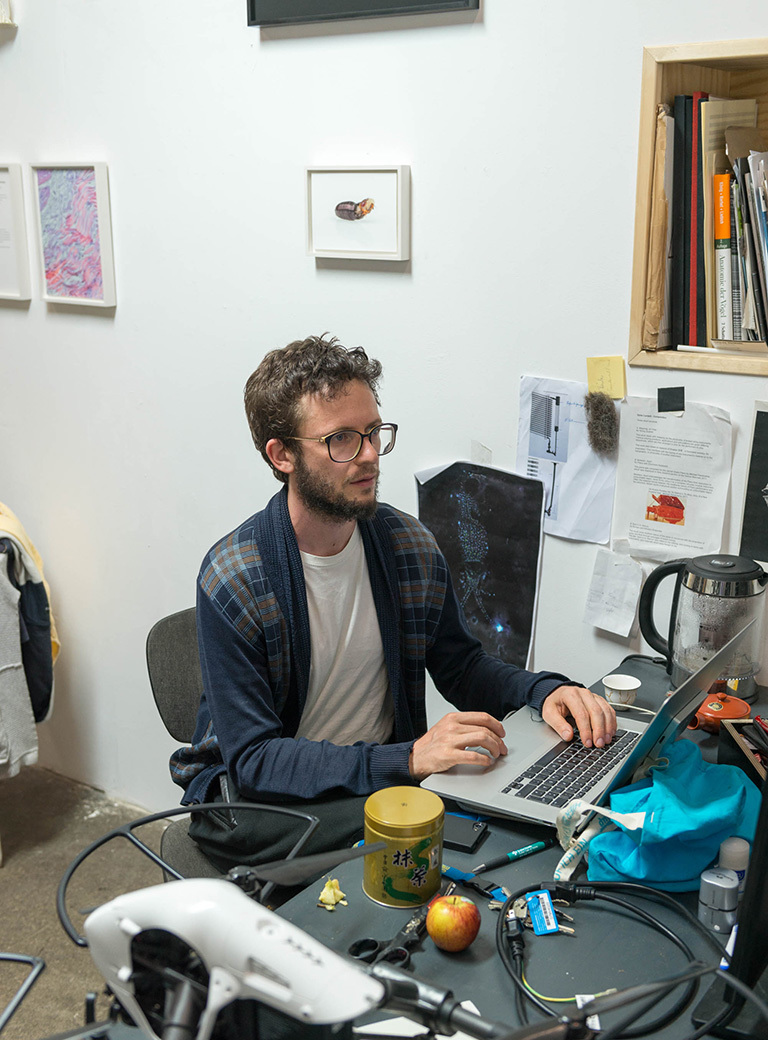
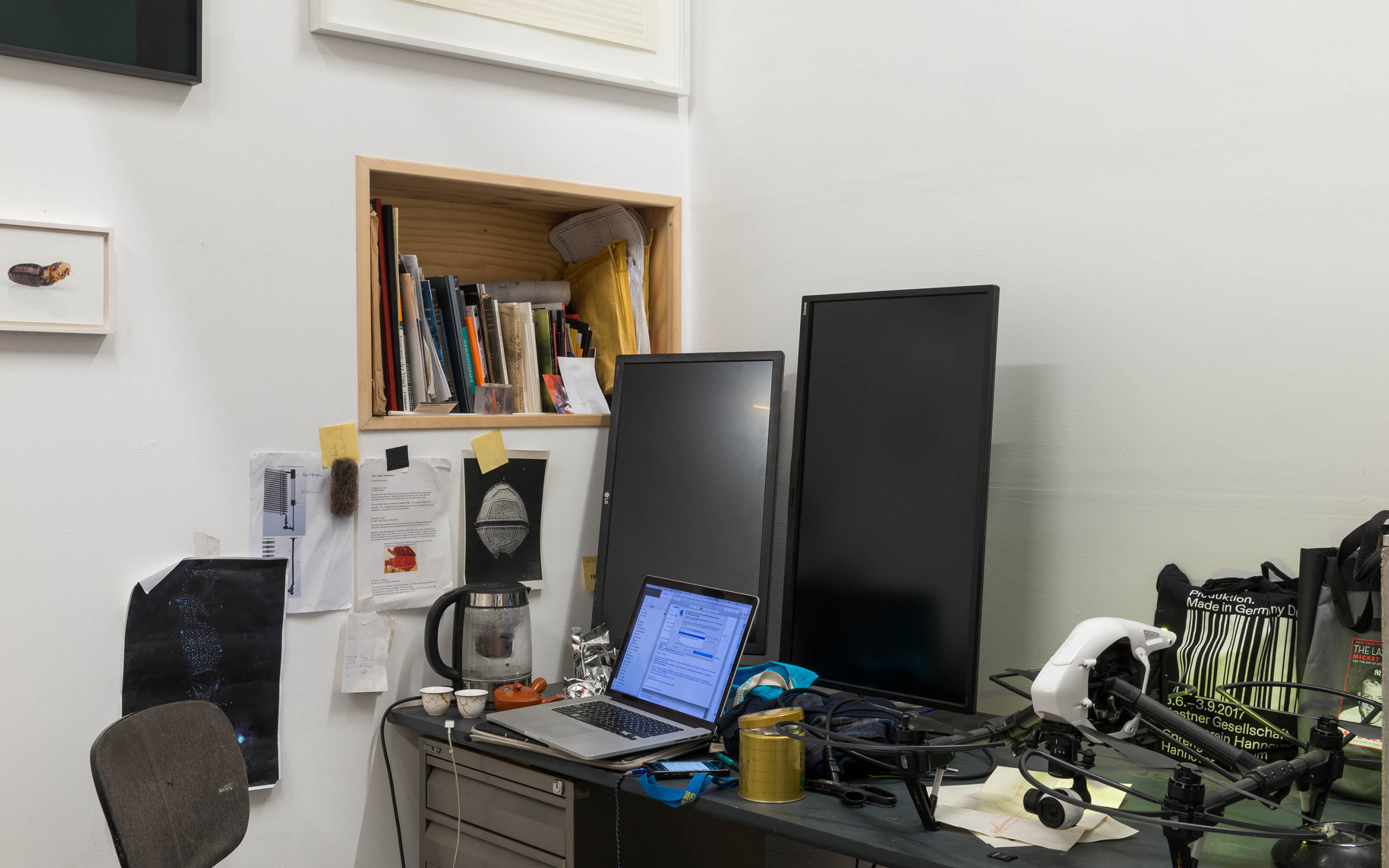
What part has Ólafur Elíasson played in your shared studio’s work climate?
Ólafur had a great talent for kindling friendship and collaboration between us – in part by the many trips together and spontaneous projects abroad. It was not a classical master-student relationship: Many incredibly exciting guests and experts from all over the world and from the most diverse disciplines came to visit. Collaborations and pronounced mutual learning was preprogrammed. That enriched our studies tremendously and continues in our friendships to this day.
Why are women artists not part of your studio community?
Good question. I don’t really think that this is gender-specific. We often had women artists in our studio community. But they left, either moved away, couldn’t pay the rent, or felt it was too dirty for them. The same has happened with male co-tenants. We would love to have women in our studio, but at the time it is indeed 100% biologically male. But that doesn’t mean that we comply with conventional male clichés or want to appear patriarchal.
What are your plans for this year?
Among other things the Festival of Future Nows at Hamburger Bahnhof, the Gaudeamus Muziekweek 2017 in Utrecht, a solo exhibition with Dittrich & Schlechtriem, and Armageddon – End without End, a group show at the Natural History Museum Bern.
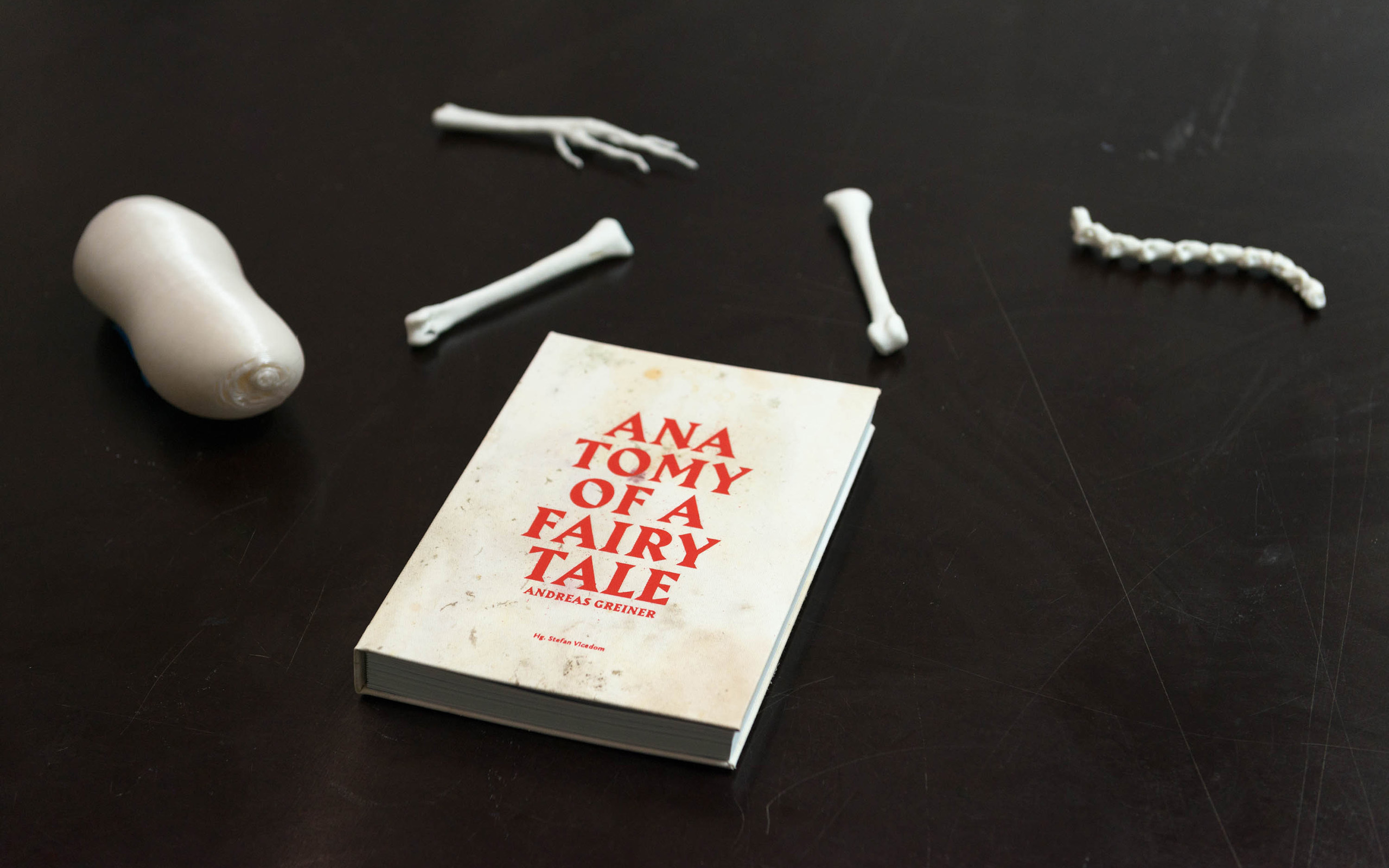
Interview: Julia Rosenbaum
Fotos: Michael Danner
Links:
Andreas Greiner website
Dittrich & Schlechtriem, Berlin


